Physical Address
304 North Cardinal St.
Dorchester Center, MA 02124
Gradual, subtle, and natural results with a long duration (> 2 years) are achievable with poly-L-lactic acid (PLLA).
Thorough facial analysis of changes in all structural tissues will enhance site-specific augmentation of volume loss and enhance outcomes.
PLLA has been increasingly used off label for soft tissue augmentation and improvement of skin laxity in a number of off-face areas, including décolleté, arms, abdomen, and buttocks.
The amount of product used at one session is determined by the amount of surface area to be treated at that session. The final volumetric correction is determined by the number of treatment sessions.
Proper technique in the preparation and injection of this biostimulatory agent will minimize adverse events.
As experience has been gained with this product and techniques have evolved, it has been found to be a safe and effective product with predictable and reproducible results.
Poly-L-lactic acid (PLLA) is a biocompatible and biodegradable synthetic polymer that stimulates collagen production. The currently commercially available forms, Sculptra (Sinclair Pharmaceuticals) and Sculptra Aesthetic (Galderma Laboratories, Fort Worth, TX), were approved by the US Federal Drug Administration (FDA) for the treatment of human immunodeficiency virus (HIV)-associated lipoatrophy in 2004 and “correction of shallow to deep nasolabial fold contour deficiencies and other facial wrinkles using a deep dermal grid pattern injection” in 2009. Since that time, PLLA has been increasingly used off-label for soft tissue augmentation both on and off the face (i.e., buttocks), as well as for improvement of skin laxity (face, décolleté, arms, and abdomen).
PLLA provides gradual, subtle, and natural results with a lasting duration. The approach to treatment with PLLA involves replacing volume by considering a three-dimensional (3D) perspective rather than focusing on individual lines and folds. Proper patient selection and assessment, as well as attention to technique in the preparation and injection of the material, will minimize adverse events and optimize results.
The gradual results seen with PLLA (usually about 4 weeks after treatment) may not make this the optimal choice for someone looking for an immediate “quick fix” for an upcoming event; however, it is an excellent choice for those wanting subtle, long-lasting results. In the studies used to gain initial FDA approval, almost 80% of patients treated still saw full correction at 25 months (the cutoff time for the study).
Recall that the initial global experience with PLLA was in the HIV-positive population as well as in older cosmetic patients, most of whom required a fair amount of product and multiple treatment sessions to achieve the desired outcome. We now recognize this as an issue of patient selection, not product selection. Older and emptier faces require more product of any kind to achieve correction. Patients who require significant volume need to be corrected with PLLA in a gradual progressive manner over multiple treatment sessions. Treatments are usually administered at 4- to 6-week intervals. Younger or fuller-faced patients may respond well and need less product and fewer treatment sessions. A longer interval between treatment sessions may be prudent for younger or fuller-faced patients who require less volume. This difference is illustrated in the patient cases seen in Figs. 10.1–10.4 . The video accompanying this chapter demonstrates treatment of a 41-year-old patient with aging changes superimposed on congenital skeletal hypoplasia ( ![]() , Fig. 10.1 ).
, Fig. 10.1 ).
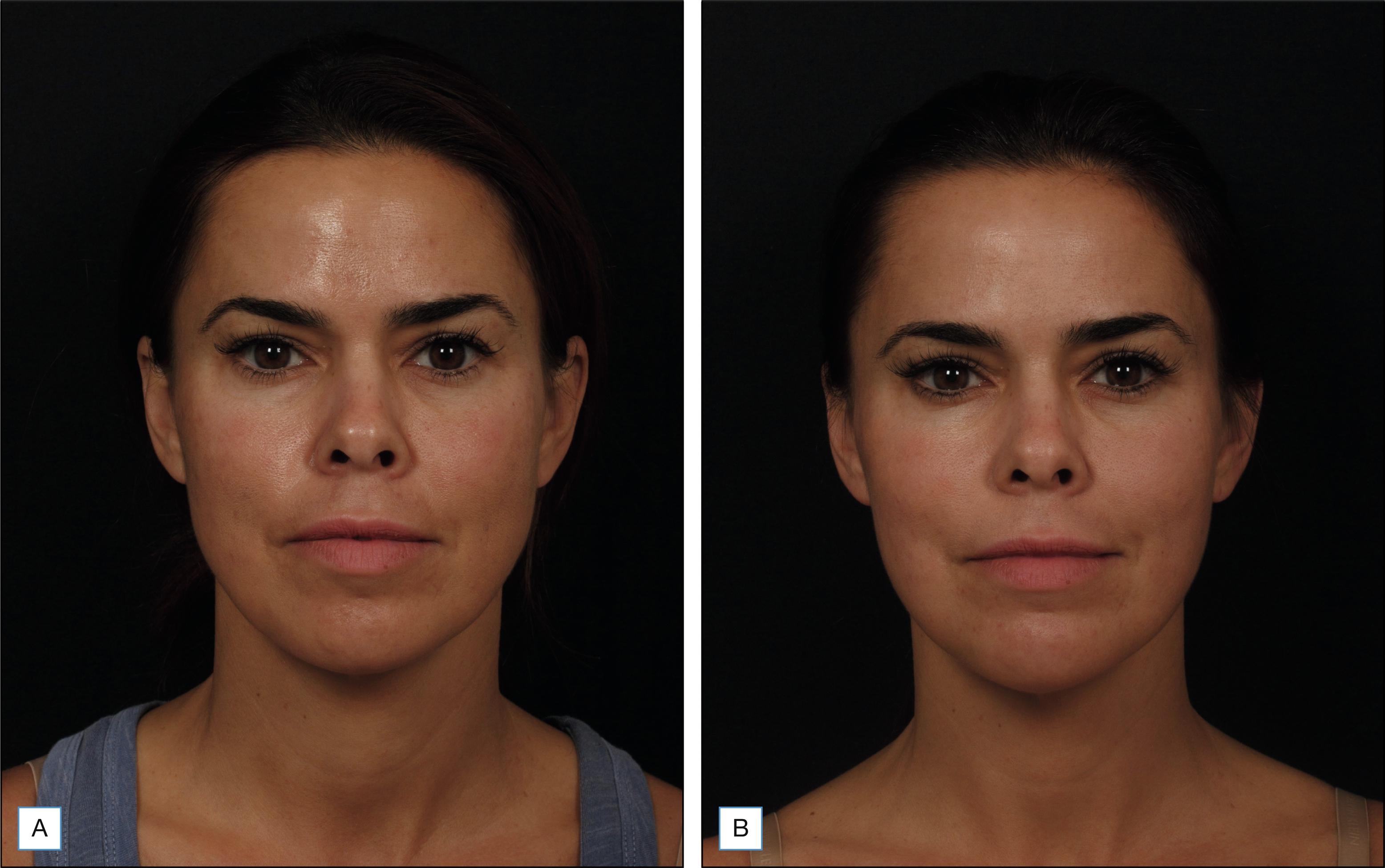
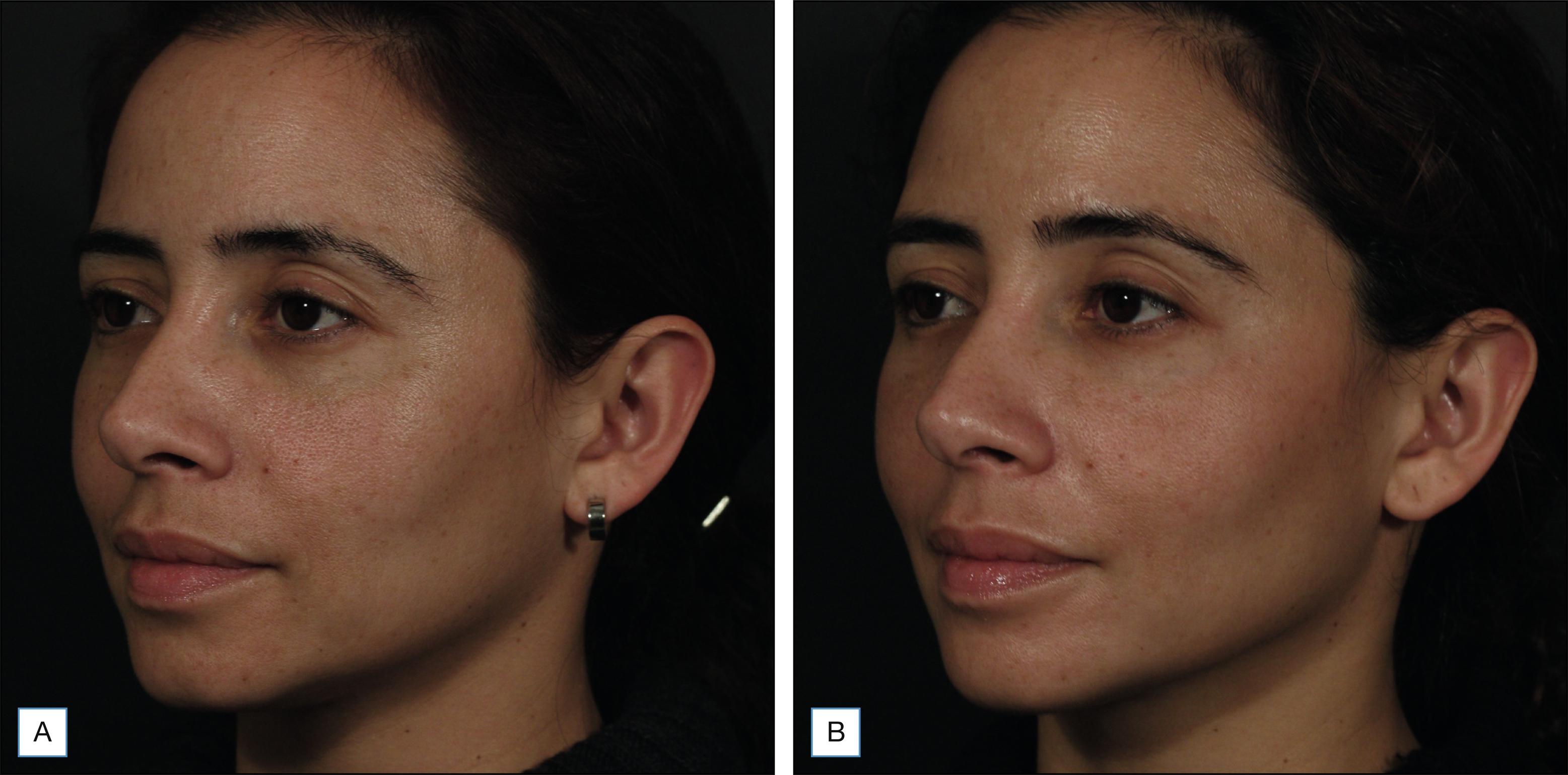
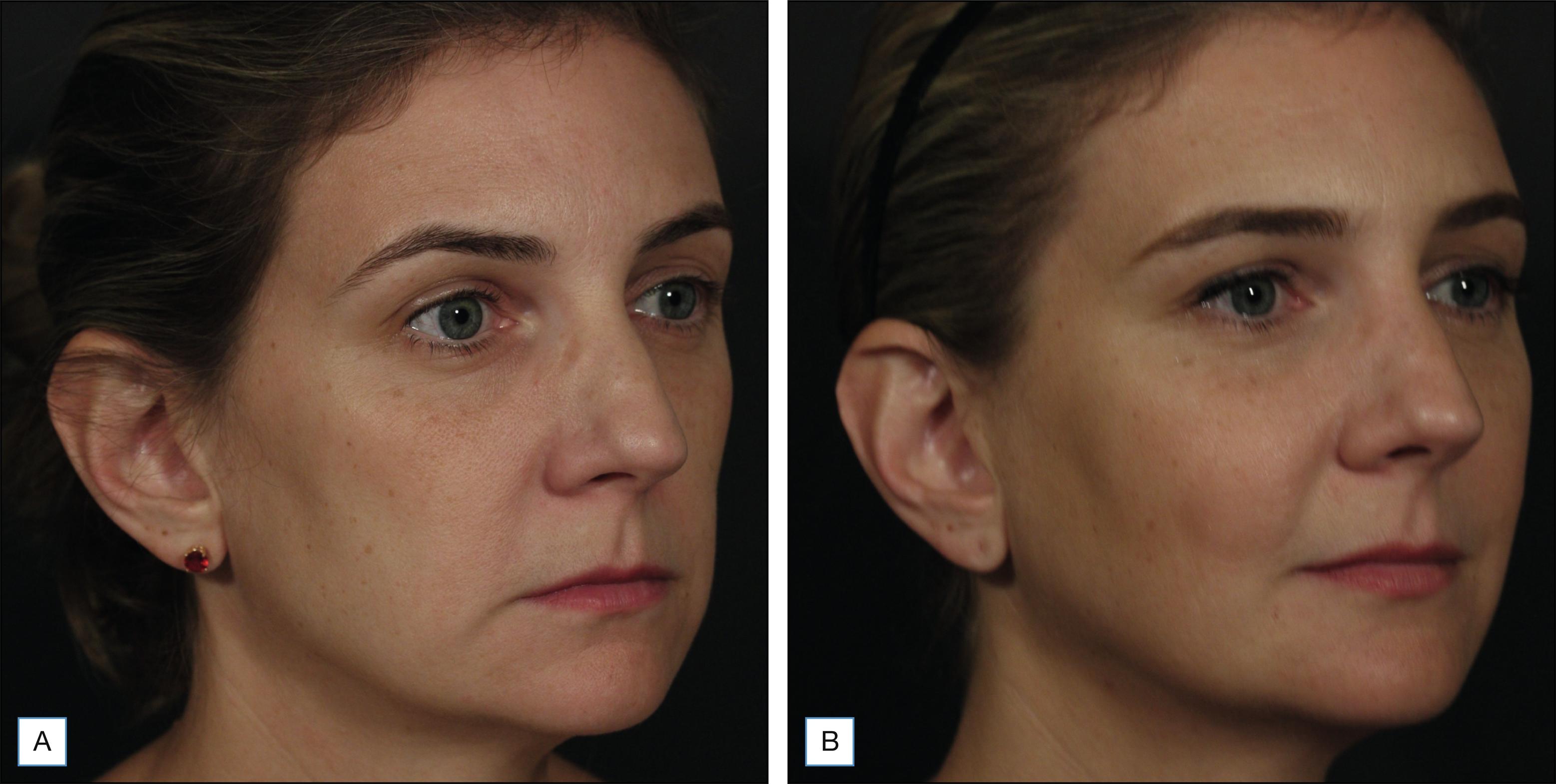
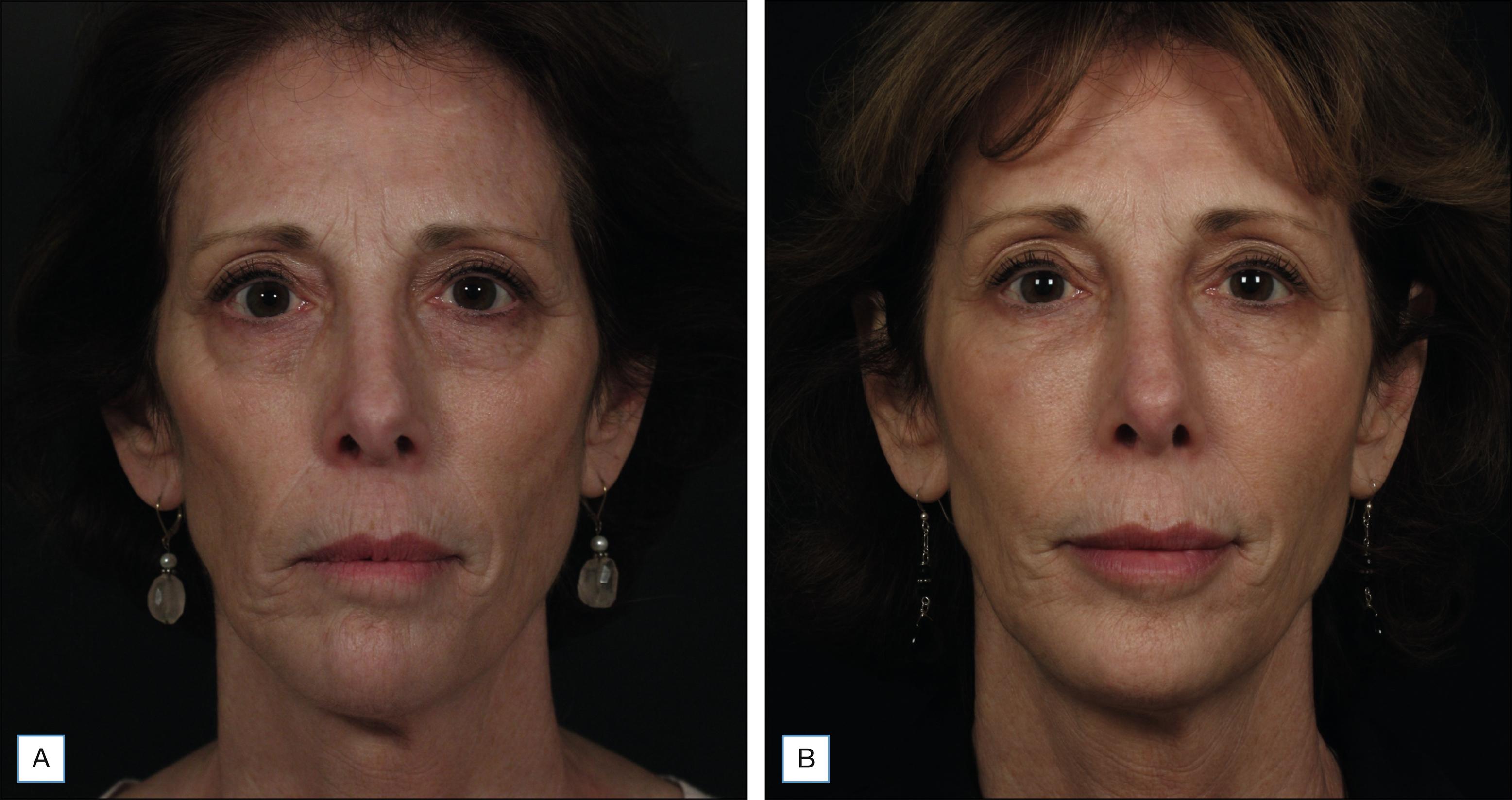
Current thinking conceptualizes the soft tissues of the face as a concentric arrangement of five basic layers, which consist of (1) skin, (2) subcutaneous fat, (3) the musculoaponeurotic layer, (4) areolar tissue, including facial ligaments and facial spaces, and (5) the periosteum and deep muscular fascia. The facial retaining ligaments pass through all layers to bind the skeleton to the superficial fascia (a composite of layers 1–3).
Aging leads to loss or redistribution of volume in the bony substructure and fat compartments of the face, which may occur in conjunction with loss of elasticity of the skin that envelops it. The facial retaining ligaments often become more visible with aging or fat loss. These changes dictate the morphology of the face in terms of its shape, proportions, and 3D topography. Recognizing where these structures are changing, as well as how that affects neighboring tissues, enhances our ability to address them with site-specific corrections to achieve optimal, natural-looking results. Obviously, this knowledge is in a constant state of evolution.
It is now widely accepted that significant changes occur in specific regions of the facial skeleton with advancing age and these changes in bony structure affect soft tissue position. The most significant changes have been documented in the glabellar, orbital, maxillary, and pyriform angles as well as in the height and width of the orbital and pyriform aperture as seen in Fig. 10.5 . Rohrich and Pessa first performed multiple cadaver studies utilizing dye sequestration to show that subcutaneous fat exists in both superficial and deep compartments in 2007. A few years later, Geirloff et al. collaborated this finding using 3D computed tomography and radiopaque dye. Facial fat compartments are illustrated in Fig. 10.6 . We now recognize that changes in the volume and position of these fat compartments contribute to the changes in facial contour seen with aging—for example, the contribution of the temporal and lateral superficial fat compartments in the overall oval shape of the face, as well as the role of the midfacial deep cheek compartments in the anterior projection of the midface and the development (or effacement) of nasojugal and nasolabial folds. Mendelson and Wong have done extensive work implicating the important role that the facial ligaments play in the characteristic changes seen in the aging face.
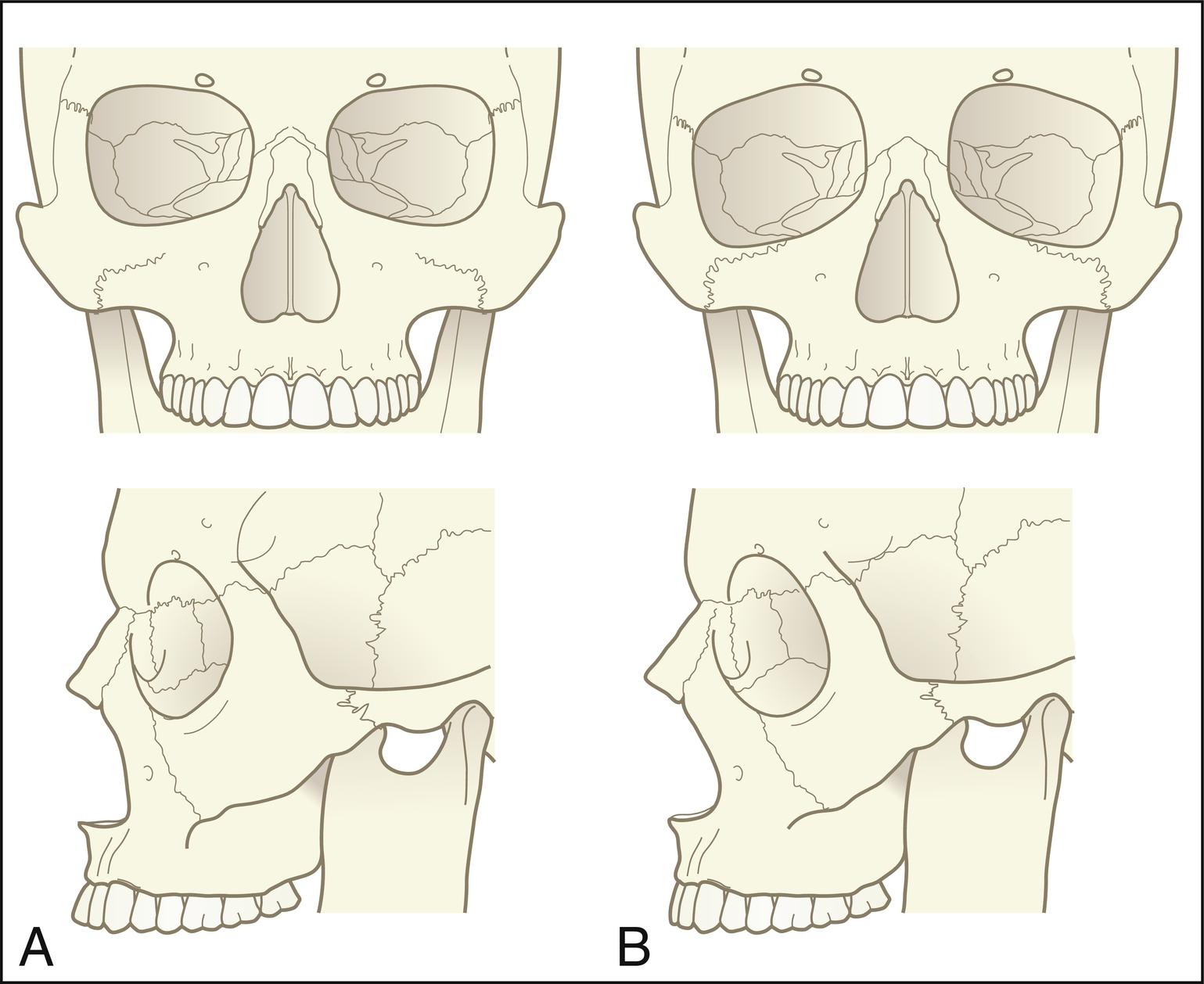
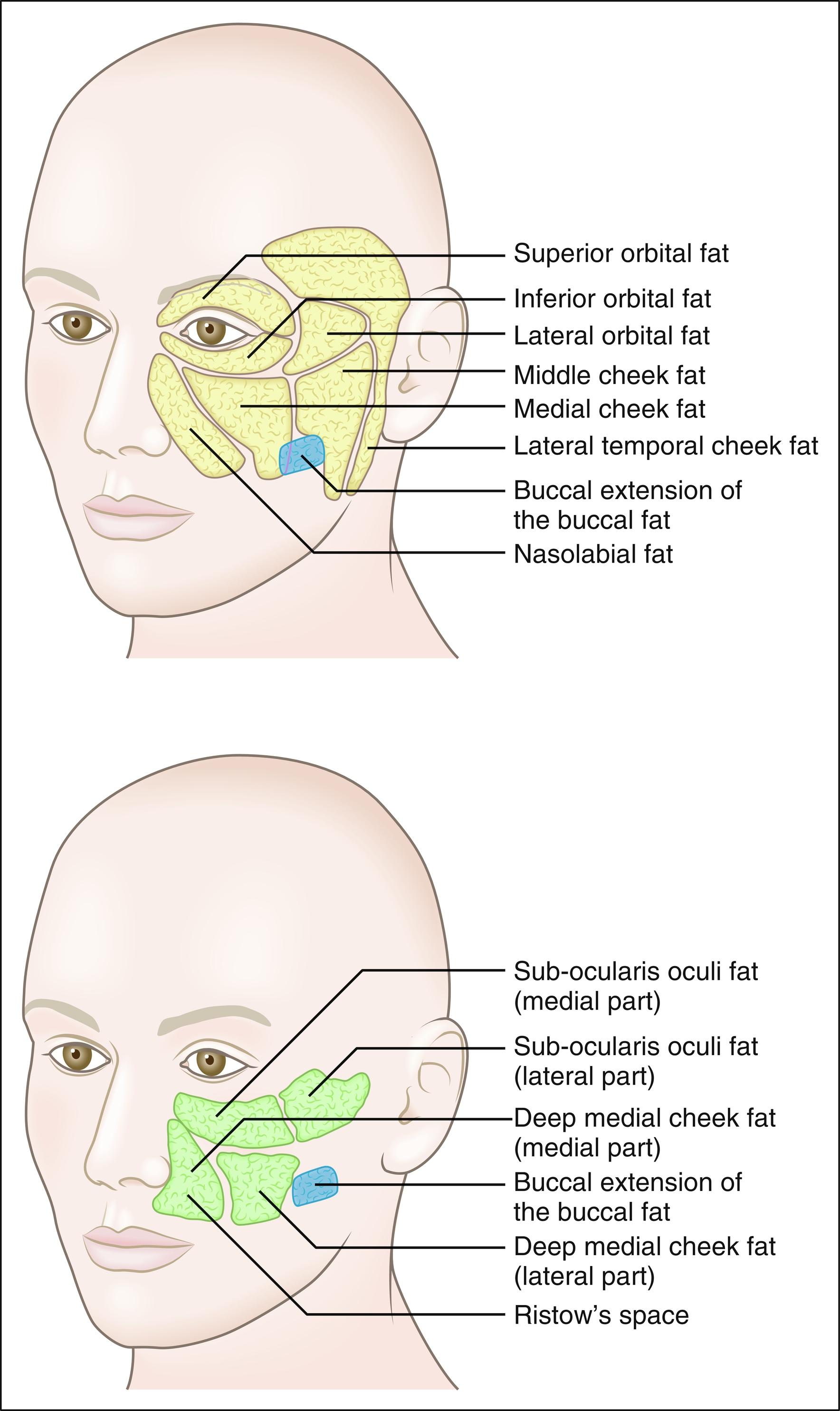
Fig. 10.7 illustrates the location of the “line of ligaments,” which delineate the relatively mobile anterior face from the relatively immobile lateral face. Treatment in this lateral facial area (i.e., temple and lateral cheek), as well as supraperiosteal treatment along the lateral zygoma, may serve to lift the cheeks and the jawline.
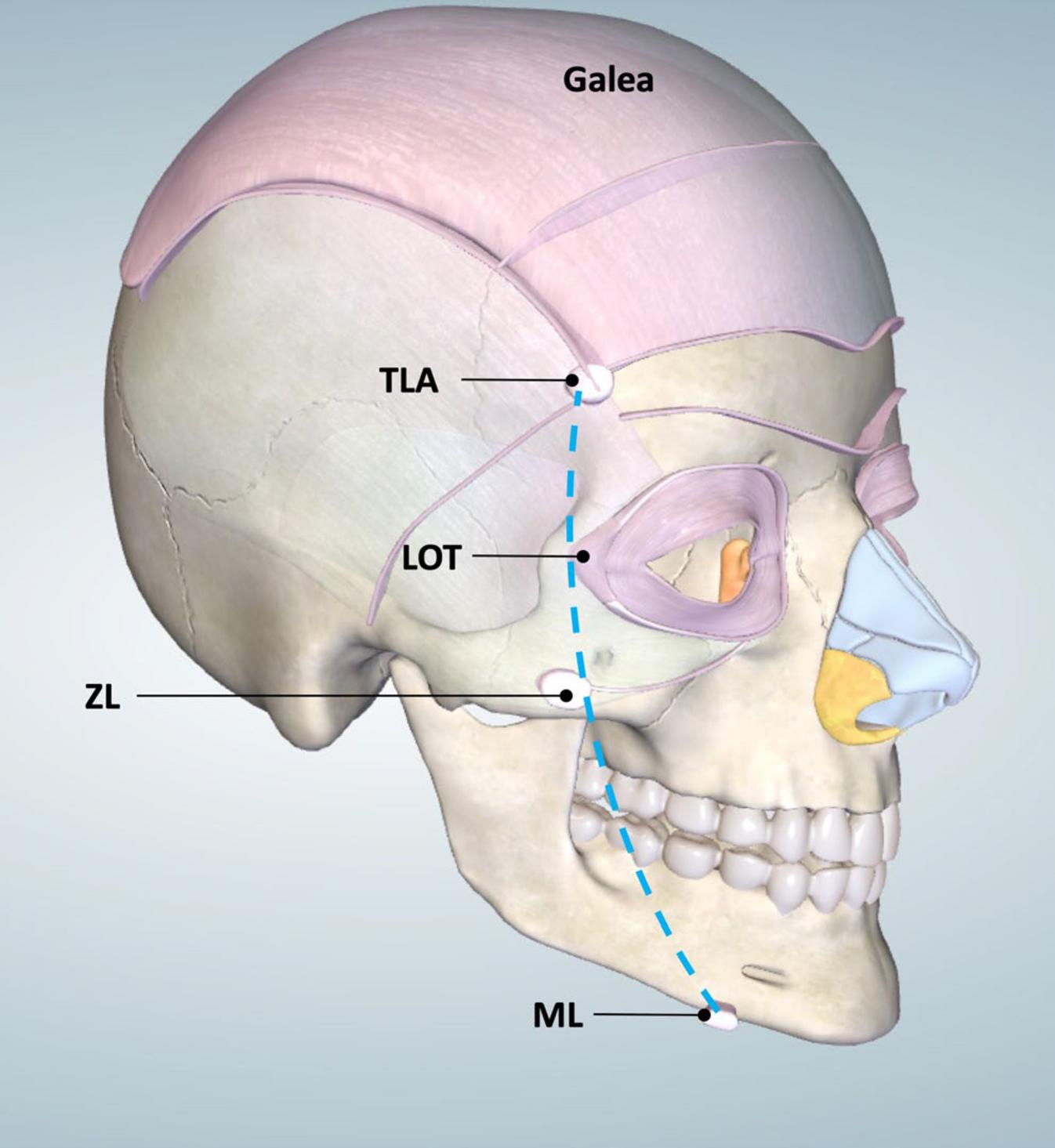
No two faces are exactly the same. Additionally, although the sequence of events as we age is somewhat predictable, the pace of these events is individualized. A deeper understanding of the contributions of all structural layers to facial morphology will help us assess each individual face with greater precision.
Become a Clinical Tree membership for Full access and enjoy Unlimited articles
If you are a member. Log in here